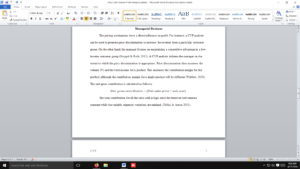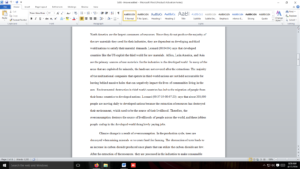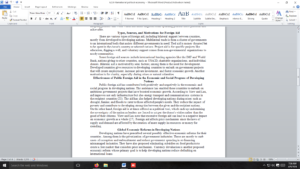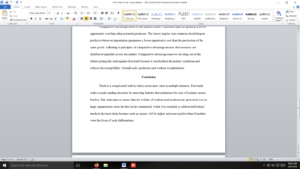Cost Volume Profit Relationships
COST VOLUME PROFIT RELATIONSHIP
Write a 2 to 3 pages paper on Cost Volume Profit Relationships. (not including cover and references).
(using APA 7th ed formatting) and include a cover page and a reference page.
You should have a minimum of three articles references (and remember to use citations in the text to match the references
Articles from 2009 – present only. Use you online library. No Wikipedia, BLOGS with Ads from Yahoo, UKEssay.com; Buzzle.com, or sites that challenge as they present a biased opinion. Google Scholar is accepted.
Need articles as references but also these two books.
References Book: Noreen, E.W., Brewer, P.C. & Garrison, R.H. (2020). Managerial Accounting for Managers. 5th edition.(Chapter 2: Cost Volume Profit Relationship)
Also can look information from another book: Walther, L. (2020). A high-quality, comprehensive, free, online textbook. PrinciplesofAccounting.com. Retrieved from PrinciplesofAccounting.com
With references: Articles from 2009 – present only. Use the University online library, searches like ProQuest .
No Wikipedia, BLOGS with Ads from Yahoo, UKEssay.com; Buzzle.com, or sites that challenge as they present a biased opinion. Google Scholar is also accepted.
Could use information from The Big 4 CPA firms’ websites provide current (published in 2017 or 2016) publications relevant to this course. Here are the Big 4 CPA firms’ websites: KPMG.com EY.com Deloitte.com PWC.com
That doc is an example given by the prof to see what she is expecting of the paper.
Here I selected several articles by the title, was not able to read them, so I do not know if any relation. Please look and select accordingly . Thank you again.
Examples articles:
1-
Trifan, A., & Anton, C. (2011). USING COST – VOLUME – PROFIT ANALYSIS BY MANAGEMENT. Bulletin of the Transilvania University of Brasov.Economic Sciences.Series V, 4(2), 207-212. Retrieved from https://search.proquest.com/
2-
Ciuhureanu, A. (2012). INVOLVEMENT OF MANAGERIAL ACCOUNTING IN ENSURING THE COMAPNY’S COMPETITIVENESS ON THE MARKET. Annals of the University of Petroşani.Economics, 12, 105-116. Retrieved from https://search.proquest.com/
3-
Kee, R. (2007). Cost-volume-profit analysis incorporating the cost of capital: JMI JMI. Journal of Managerial Issues, 19(4), 478-493,457-458. Retrieved from https://search.proquest.com/
4-
Larkin, Joseph M,PhD., C.P.A. (2009). Cost-volume-profit modeling: A strategic and financial approach. Journal of Business Case Studies, 5(6), 35-40. Retrieved from https://search.proquest.com/
5_
Edwards, J. B. (2016). Modern gross profit analysi. The Journal of Corporate Accounting & Finance, 27(4), 45-55. Retrieved from https://search.proquest.com/
6=
Luther, R., & O Donovan, ,Brian. (1998, Sep). Cost-volume-profit analysis and the theory of constraints. Journal of Cost Management, 12, 16-21. Retrieved from https://search.proquest.com/
The description of the title is a little bit different here:
Week 2 written assignment: Write about cost-volume-profit and provide examples of break-even and target profit. Show formulas as needed and draw a graph or two in Excel.
Answer preview
A cost-volume-profit (CVP) refers to a tool of management. According to Walther (2020), a CVP analysis creates a relationship between the cost of a product, the volume of sales, and organization profitability. The technique can be used for a single product business or in a multiple product situation. It helps the manager to make appropriate decisions regarding a profit or service regarding profitability (Noreen, Brewer, & Garrison, 2020). These key decisions include product price, product portfolio, production capacity, and business operations. Particularly lowering the unit price decreases the total revenue unless the sales volume increases through competitive advantage, thus increasing profitability through economies of scale. The decisions are based either on controlling or forecasting the financial metrics (Ciuhureanu, 2012). The paper thus describes the CVP analysis, including managerial application and the associated benefits. CVP is used in forecasting and managerial control in an organization through break-
[977 Words]
Cost Volume Profit Relationships











